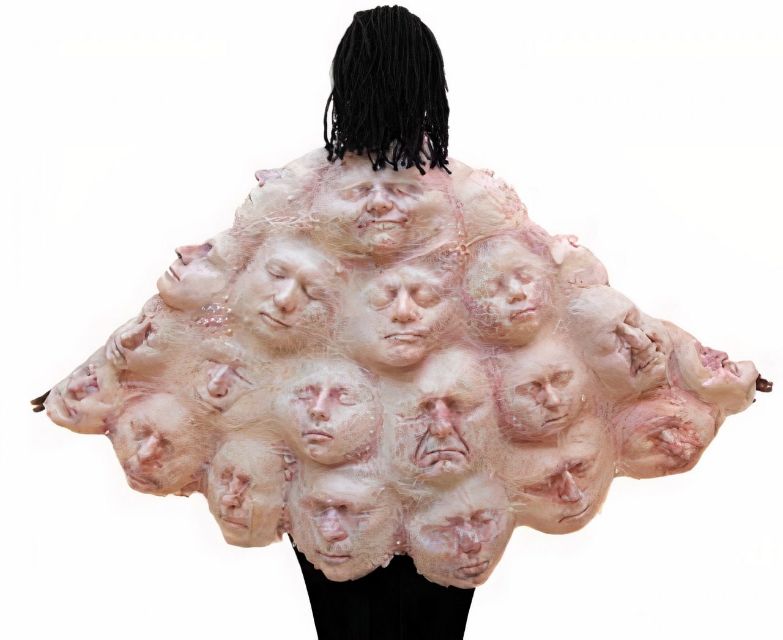Keeping It Synthetic?
- The Social Condom
“Biosynthetic fabrics have the potential to be more sustainable automatically than the rather energy-inefficient process of feeding, let’s say, cows to get leather.”
Even though one might experience a sense of uncanniness when thinking of wearing, or perhaps just even seeing, this piece of clothing, the repurposing of human body parts is not uncommon nowadays. For example, organ donation, skin included, is becoming more and more common, and it is possible to donate hair for wigs and semen or eggs for ‘artificial’ reproduction, so why not repurpose human skin for clothing? Especially with regards to finding environmentally sustainable alternatives for clothing fabrics, is real human skin a valuable option? Goulet answers this question in the Vice interview as well, and says that he chose to synthetically materialize a skin-like fabric because actual human skin cannot be worked into leather. Now, what Goulet means precisely is not entirely clear. Perhaps it is impossible to treat human skin like cow skin and produce human leather like cow leather. But that certainly does not mean that human skin has no use whatsoever in producing fabrics.
Tina Gorjanc, a designer focused on the exploration of new clothing materials, worked on her project Pure Human in 2016, which explored the possibilities of bioengineering human leather. The cells of an individual could be separated and repopulated into new skin tissue to make human leather, imbued with the DNA of that individual. Concerning its sustainability, the bioengineer involved, Dr. D. N. Nesbeth, says: “Biosynthetic fabrics have the potential to be more sustainable automatically than the rather energy-inefficient process of feeding, let’s say, cows to get leather.”
How far do we go?
So, if producing clothing with this fabric is feasible, why are we not doing it? Legal issues aside (although not unimportant), the technology is ready, but society does not seem to be. Is there a primal revulsion in ‘desecrating’ the human body that withholds us from wearing such clothes? Or perhaps it is very much a visual matter: we see our skin as inextricably bound to our body, maybe as the physical border of our body, which may make it harder for us to envision it being repurposed, different even from an internal organ such as a liver or a kidney. It may also be Goulet’s The Social Condom in particular which strikes such an uncanny note, since it very much seeks to resemble the human form with its faces and material qualities. One would probably be more inclined to wear human leather, if there was no trace of human properties. But this would make the materialization process less transparent when transparency is much needed in the fashion industry. Looking past the ick of this type of clothing, wearing and accepting it as part of our bodily metamorphoses might then be a step in the right direction for environmental sustainability in the clothing industry. The question remains whether humanity is willing to undergo such physical metamorphoses in order to contribute to a more healthy attitude, both for the fashion industry and for the consumer, towards the environment.
